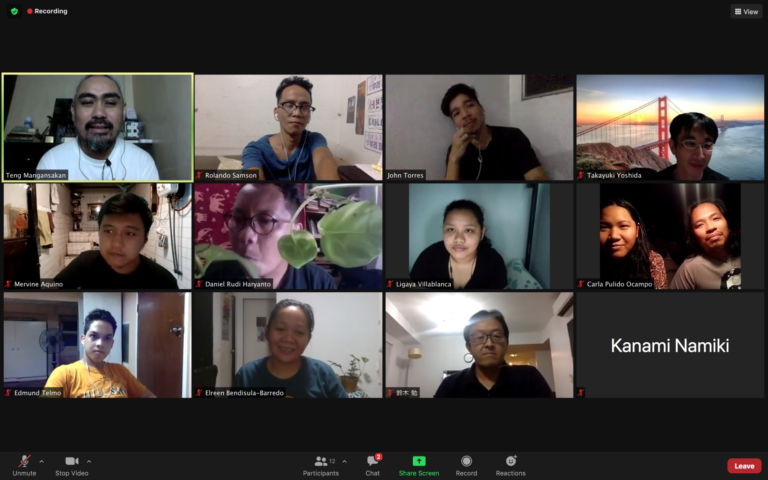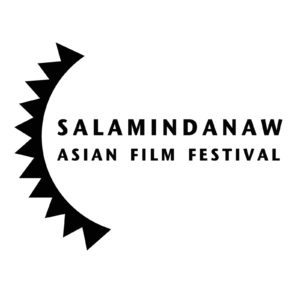
Salamindanaw Asian Film Festival 2020
August – November 2020
World cinema is grappling with the effects of the global crisis brought about by the COVID- 19 pandemic. It has been reshaped by the magnitude of this global catastrophe. For film productions, festivals and other related initiatives to survive, they must adapt to changes in lieu of mass gatherings and face to face interaction.
Salamindanaw Asian Film Festival also needed to adapt to a digital and online version to be able to continue with its thrusts of (1) raising awareness and promoting Asian cinema with emphasis on strengthening the cultural ties between Mindanao and its Southeast Asian neighbors; (2) to support the nascent regional film movements in Mindanao and the east ASEAN region, and (3) to engage the public in both popular and critical discourse on art and cinema and their transformative power to shape ideas about society, thus encouraging cultural diversity and the plurality of creative expressions.
As the pandemic has affected not only film production but also international co-production and the notion of national and imagined borders, Salamindanaw 2020 embarked on a project that sought to (1) present a picture of how filmmakers and their communities across Asia have been affected by the pandemic through a collaborative film project, (2) know and determine how the pandemic affects modes of filmmaking and emerging aesthetics resulting from technologies such as online video conferencing, and (3) hear out solutions and mechanisms in place that will address the challenges of filmmaking in Asia in the new normal or post-pandemic world.
The project was implemented in a four-month period which commenced on August 2020 and culminated on November 22, 2020.
Filmmakers included were as follows: For the Philippines, we had five filmmakers namely Bagane Fiola (Davao), John Torres (Manila), Mervine Aquino (Manila/Baguio), Ram Botero (Nabunturan), Joi Villablanca (Tacloban), and Ronnie Gamboa (Cebu). For the Southeast Asian filmmakers, we identified, Rudi Daniel Haryanto (Indonesia), Gladys Ng (Singapore), Nontawat Numbenchapol (Thailand) and Putri Purnama Sugua (Malaysia). Takayuki Yoshida represented Japan in this project. With additional funding from the Film Development Council of the Philippines (FDCP), we added more filmmakers to the project namely Lwin Koko Oo from Myanmar, Mark Lester Valle and Carla Pulido Ocampo (Mountain Province), Hassanodden Hashim (Marawi), and Edmund Telmo (Ozamiz).
The primary project site was in General Santos City. Because of the online nature of this project, the secondary project sites were the countries and cities of residence of the participating filmmakers.
In August, Filipino filmmakers and their Asian counterparts were identified to collaborate on this project that provide a diversity in backgrounds. They were asked to film themselves, their families or communities in a period of a month that encapsulates their world in the new normal. They were also asked to make journals and reflections on cinema and of themselves as practitioners. They were instructed to edit the footages into scenes and sequences, or even a singular film of no more than 5 minutes. These were turned over to the Festival, and in consultation with all the participating filmmakers and an editor in a series of online conferences both in Zoom and Facebook, the clips or footages were pieced together to present a collaborative, omnibus film that reflected the realities in the region in the period of the pandemic.
With 12 filmmakers and an editor, the project held its first Zoom conference on October 22 to lay down the foundation of the film project. The editor John Torres introduced two important questions: For the Philippines, since most of the filmmakers come from the regions, is it acceptable that a Manila filmmaker will assemble their footages? This question is a manifestation of the current dynamics in Philippine cinema in which regional filmmaking is seen as a resistance to the hegemonic narrative, aesthetic, formal and even economic control of the center in the production of films. The filmmakers agreed to trust Torres with their materials. In return, Torres committed himself to a more consultative process during the editing phase of the project.
On November 22, we held the final Zoom conference with the participating filmmakers, Japan Foundation representatives and invited guests. Prior to this, the link to the second cut of the film was sent so that all the participants in the Zoom conference can view it. The decision to do this is in recognition of the disparity in internet connection across the Asian region, and the technical limitation of the Zoom application which does not present videos in an optimal setting. We also decided not to premiere the film on a public online platform so that any revisions can be made without the specter of public opinion, and to preserve the world premiere status of the film which is no longer applicable to physical premieres but due to the changes brought about by the pandemic now encompasses online premieres.



